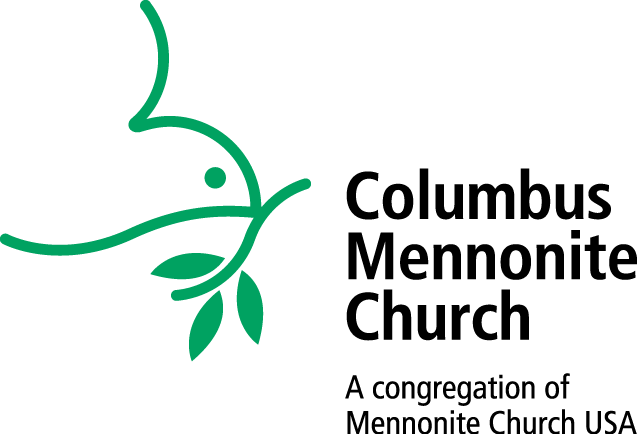The conversion of Saul: A revelation of blindness | 10 April 2016
https://joelssermons.files.wordpress.com/2016/04/20160410sermon.mp3
Text: Acts 9:1-19a
The first time we meet Saul he’s a part of a dramatic and violent scene. He’s overseeing the stoning of a man named Stephen. This is the end of Acts chapter 7. Stephen has just given a lengthy public speech, a sermon, highly critical of his own people. The individuals listening are agitated to the point of transforming into a mob. In the words of Acts, “with a loud shout they all rushed together against him.” Outnumbered and overpowered, Stephen is dragged out of the city and stoned to death.
Had everyone there paused, surrounded Stephen’s lifeless body, and posed for a photograph, it would have looked remarkably similar to the many pictures of lynchings from within our own country. In 2015 the Equal Justice Initiative published a five year study recording 3,959 such lynchings of black women, men, and children that occurred in the US between 1877 and 1950. A number of these lynchings included a congratulatory group photo, duplicated as souvenirs and postcards.
Stephen is remembered as the first Christian martyr. Saul of Tarsus, who we also know as Paul, as in the Apostle Paul, as in St. Paul, is remembered as having been there, apparently a key instigator. Acts says that this crowd “laid their coats at the feet of a young man named Saul,” and that Saul “approved” of Stephen’s killing. Several verses later we’re told “Saul was ravaging the church by entering house after house, dragging off both men and women, (committing) them to prison.”
Were Saul alive today we may very well refer to him as a religious terrorist. Is it going too far to suggest that Saul of Tarsus could have been Saul of the KKK, or even Saul of ISIS? Maybe, maybe not. Or maybe this makes Saul seem too different…
The conversion of Thomas: A fictional alternative OR A parable about doubt and doubles | 3 April 2016
Text: John 20:19-29
The disciple we know as Doubting Thomas is referred to in John’s gospel as Thomas Didymus. Didymus is Greek for “twin.” Thomas the Twin is famous for having missed seeing the risen Jesus. He believes only after he is able to place his hand in the side of the wounded Christ, who appears a second time. With our Easter focus on Conversions, I wondered this week how Thomas’ life might have been different had he never gotten that second chance to touch, and thus believe. This is a story of that possible alternative path, starting with the biblical narrative, and soon veering off into pure fiction.
The conversion of Thomas: A fictional alternative OR A parable about doubt and doubles
Thomas the Twin, as we was called from birth, rested in his home on what would be the final day of his life. His body frail, but mind still sharp. As people tend to do when they know death is near, he began to mentally review his life.
He thought back to that day he had revisited so many times before. He was once again in the house with the shut doors in the holy city of Jerusalem. He was there with ten of his comrades, those who had given up everything to follow the man from Galilee, their Master. One of their own had betrayed the Master and now both of them were dead: one crucified, the other death by suicide.
Despite this grim turn of events, the tiny band of disciples were now overcome with excitement. A week ago, behind these same doors, the Master had appeared to them, still bearing the signs of his brutal death in his hands and side, but miraculously alive. Somewhere between human and angel, he had stood among them, blessed them with a…
Idle tales of resurrection | Easter Sunday | 27 March 2016
Text: Luke 24:1-12
When I say “Christ is Risen” you say “Christ is Risen indeed!”
“Christ is risen!…..
“Christ is risen!…..
After a season of Lent, 40 days of wandering through the wilderness of racism’s persistence around us and within us…We need resurrection.
After confronting the devil of white privilege and its many temptations…We need resurrection.
After considering the subtle lure of colorblindness, naming and rejecting racial hierarchy…We all need resurrection.
After honoring and lamenting names of the crucified, Sandra Bland, Michael Brown, Eric Garner, Tamir Rice, after confessing our own complicity in systems and attitudes that possess and oppress, after last week’s spoken word throw down, memorized, mesmorized, Whoa, did that just happen? in a Mennonite Church? After 40 days of wondering in the wilderness that is 21st century America…
We need, we want, we long for resurrection.
Each gospel gives a different combination of characters who first witness Jesus’ resurrection. In John it’s Mary Magdalene who goes to the tomb alone, only to find it empty. It Matthew, it’s Mary Magdalene and “the other Mary” who go together, as the sun rose on the first day of the week. Mark says that Mary Magdalene, Mary the mother of James, and Salome were the ones who went, bringing their spices to anoint the dead body that wasn’t there.
One, two, three witnesses to resurrection.
In the Torah, the testimony of one witness wasn’t enough for a criminal accusation or otherwise, but bring in two or three witnesses and you had yourself a case. As if following its own criteria, the book of Deuteronomy states this law twice, once in chapter 17 and once in chapter 19, these two chapters each a witness to the requirement that evidence must be established on the testimony of two or three witnesses.
Of all the gospels, Luke’s scene at the empty tomb is the…
The Side of the Road | Palm Sunday | 20 March 2016
Text: Luke 19:28-42 (Palm Sunday)
Part 1: Four hours…
Michael Brown’s body lay in the street
Barely covered up; a thin white sheet-
-of solace too late and too small to hide the feat
From the gathering crowd; already beat-
-down by the white-hot mid-August Missouri heat,
Ferguson’s misery chronicled tweet after tweet after tweet.
“I just saw someone die OMFG”
Four hours, there on Canfield Drive
A son, a nephew, a friend, alive-
-no more: fighting to survive
In a system not built for him to thrive.
A country not built for him, but built by him
A people turned to fuel for an engine so grim
God’s blessing enshrined in American hymns
Whose shallow verses barely even skim
These deeply troubled waters where so many…
Sink
But wait! We think
Where’s the link?
People on the brink
Skin so…pink?
Not white! We shrink-
-back from the stink
Of all that ink
Spilled to prove that…pink
Will always be at least two-fifths more
And that’s just the compromise
Now, no longer chains but boot straps
Tied so tight they leave no slack-
-to pull up on.
Feet tripping on the crack
The war on drugs paved in Black-
-communities cemented in the reality that one in three of their men
Will see the inside of a jail cell
Sadistic statistics making our feet pessimistic
One in three of their men will be haunted not just by those four walls
But by the four thin lines of a box
Their pasts making them modern day Goldilocks
Too…reformed(?) for prison, too dangerous for jobs
Finding very little in this house that’s juuuuust or right
But Obama! Some say,
As if the word itself is a foreign term
Roughly translating to mean:
Plausible deniability.
Protecting white fragility
From the instability
Caused by the mobility
And disobedient civility
Questioning our credibility
Calling us to liability
Not accepting the lies of our ability
To break through futility
And…do the right thing.
But, personal responsibility! Some say.
Just do what you’re told, some say.
Michael Brown was a hulking demon, some say.
Trayvon’s Skittles and juice were ingredients for a drug cocktail, some…
Savoring life | Lent 5 | 13 March 2016
Text: John 12:1-8
You know, Judas had a point.
Everybody knew the spikenard in that flask was liquid money. Rather than being poured out on Jesus’ feet, it could have been sold, the money given to the poor. Judas declares that it’s worth 300 denarii, nearly a year’s wages for a laborer. No one contests the estimate. Spikenard was imported from the Himalayas and was a precious commodity. It would take the average person a whole year’s worth of work, all the earnings put into savings, to purchase something so valuable, so costly, so prized. How much do you make in a year for your labors, and how readily could you set that amount aside? How quickly would you be willing to empty the whole account, poured out and spent, in one fleeting act of extravagance?
This is an intimate scene. Six days before the Passover, and pilgrims are streaming into Jerusalem from all around. Jesus has booked his reservation with his dear friends Lazarus, Martha, and Mary. They live in the town of Bethany, just up and over the hill from Jerusalem, an inner ring suburb of the holy city. John has just told the whole Lazarus story in the previous chapter, and reminds us here, in case we’ve forgotten so soon, that Lazarus was the one Jesus raised from the dead. Now they are sitting down for dinner, and Martha served. Of course. That’s what Martha did. It’s in Luke’s gospel where we’re told of Martha’s inclination toward service, working away while her sister Mary sat at Jesus’ feet. Doing nothing, except listening.
Now Mary is at Jesus’ feet again.
Previously she had stretched the boundaries prescribed for her gender, a woman sitting at the feet of a rabbi, just like a male student. Now what she doing is so far beyond…

